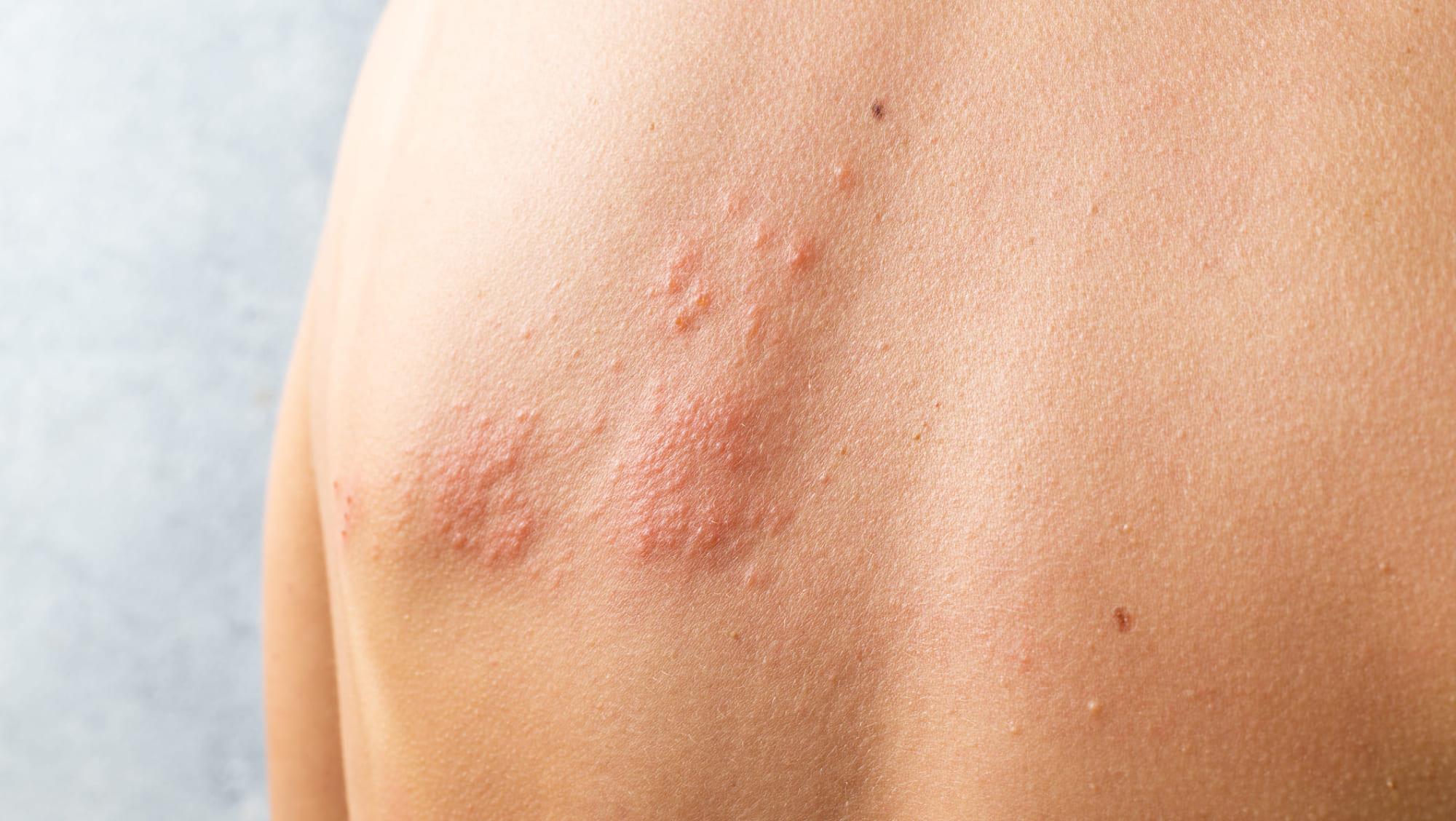
Medically Reviewed by Dr. Lee Hwee Chyen
MBBS MRCP (UK) FAMS (Dermatology)

Shingles, also known as herpes zoster, is a viral infection caused by the varicella-zoster virus, which is also responsible for chickenpox. After a person recovers from chickenpox, the virus can remain dormant in nerve tissue and reactivate years later to cause shingles.
This condition is characterised by a painful rash that can occur on any part of the body but typically appears as a single band of blisters that wraps around either the left or the right side of the torso.
Shingles recurrence occurs when there is reactivation of the varicella-zoster virus, which remains dormant within the nervous system after an initial episode of “chickenpox”. This can happen years after the first episode, often due to factors that compromise the immune system, such as ageing, stress, or certain medical conditions and treatments.
Although most individuals who experience shingles do not have it again, about 1 to 5% of patients may face recurrent episodes. The timeline for recurrence can vary; some may experience a second episode within just a few years of the initial outbreak, while others might not have a recurrence for decades.
The risk of recurrence typically increases with age, indicating that the immune system’s ability to keep the virus in check diminishes over time.
The symptoms of shingles and recurring shingles are generally similar, although the severity and specific manifestations can vary from one episode to another:
Several factors can increase the likelihood of both an initial outbreak of shingles and its recurrence:
The risk of shingles and its recurrence increases with age, particularly in individuals over 50 years old.
Individuals with weakened immune systems, due to conditions such as HIV/AIDS, cancer, or treatment with immunosuppressive drugs, are at a higher risk.
Having had shingles once increases the possibility of recurrence, though most people do not experience shingles more than once.
High-stress levels and poor emotional health can impact the immune system, potentially triggering a recurrence.
Injury to the skin or nerve tissue may sometimes reactivate the virus.
Diseases that affect the immune system, like diabetes, can increase the risk.
Treatment for shingles and their recurrence focuses on managing symptoms, accelerating rash healing, and minimizing the risk of complications. The mainstay treatments include:
These are most effective when started within 72 hours of the first signs of the rash. Common antivirals include acyclovir, valacyclovir, and famciclovir.
Pain management can be achieved through over-the-counter pain relievers, prescription pain medications, or topical creams to alleviate the discomfort associated with the rash.
The shingles vaccine is recommended for older adults to reduce the risk of developing shingles and its recurrence, as well as the severity of the disease if it does occur.
Seeking medical advice early, ideally within the first 72 hours of symptom onset, is crucial for effective shingles management. Prompt initiation of antiviral therapy particularly helps to reduce the risk of complications. It’s important to consult a healthcare provider if you experience severe pain, an extensive rash, or if the rash affects sensitive areas such as the eye or ear, to prevent serious complications.
Additionally, those experiencing recurrent episodes of shingles are advised to discuss management and preventive strategies with their healthcare provider to mitigate future outbreaks and improve their quality of life.
Effective management of shingles and its recurrence relies on early intervention and adherence to prescribed treatments. Through understanding and addressing the underlying risk factors, individuals can significantly reduce the impact of this condition.
Heat rash, also known as prickly heat or miliaria, is a skin condition due to blocked sweat ducts. Read on to learn more.
Melanoma is a type of skin cancer that originates in the melanocytes, the cells responsible for producing melanin, the pigment that gives skin its colour. Unlike other skin cancers, melanoma has a higher potential to spread to other parts of the body and become life-threatening if not detected and treated early.
Many wonder whether eczema can resolve without treatment. The answer depends on the individual's type of eczema, age, environmental factors, and overall health status. Read on to learn more about eczema and the appropriate management strategies for this condition.